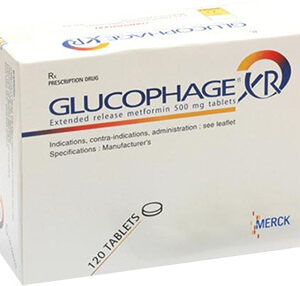Metformin Overview
Metformin hydrochloride is a prescription medication that belongs to a class of drugs known as biguanides. It is primarily used to improve glycemic control in adults and children with type 2 diabetes mellitus. This oral anti-hyperglycemic agent can be used alone or in combination with other medications, including insulin.
Indications for Use
Metformin is indicated for the management of type 2 diabetes mellitus when diet and exercise alone do not result in adequate glycemic control in adults and pediatric patients 10 years of age and older. It may be used as monotherapy or with insulin or other commonly used diabetic medications.
Dosage and Administration
The appropriate dosage of metformin may vary based on individual patient needs. It is typically initiated at a low dose to minimize gastrointestinal side effects and then gradually increased. The maximum recommended daily dose is 2550 mg for adults and 2000 mg for pediatric patients. Administration should be with meals to reduce gastrointestinal disturbances.
Contraindications
Metformin is contraindicated in individuals with severe renal impairment, acute or chronic metabolic acidosis, including diabetic ketoacidosis, and known hypersensitivity to metformin or any of its components.
Precautions
Before initiating metformin, renal function should be assessed and monitored periodically thereafter. Caution is advised in those with hepatic impairment or heart failure. Avoid use in situations where tissue hypoxia may occur, such as cardiovascular collapse or pulmonary insufficiency.
Adverse Reactions
Common adverse reactions include gastrointestinal disturbances such as diarrhea, nausea, vomiting, flatulence, indigestion, and abdominal discomfort. Lactic acidosis is a rare but serious complication that can be fatal and requires immediate medical attention if symptoms occur.
Warnings
Metformin therapy carries a Black Box Warning for lactic acidosis, a life-threatening condition that can occur due to metformin accumulation. Factors that may increase the risk include renal impairment, concomitant use of certain drugs, and conditions associated with hypoxia.
Drug Interactions
Certain drugs may interact with metformin, affecting its efficacy and safety. These include alcohol, cimetidine, corticosteroids, diuretics, estrogens, thyroid products, and various others. It’s crucial to inform healthcare providers of all medications and supplements being taken.
Overdosage Responses
In case of metformin overdose, supportive measures should be initiated. Lactic acidosis is a potential consequence, thus prompt hemodialysis is recommended to correct acidosis and remove accumulated drug.
Emergency Measures
If an overdose is suspected, seek immediate medical attention. Hemodialysis is an effective means of removing metformin and correcting metabolic acidosis. Proper hydration and supportive care are also essential for the management of overdose.
Clinical Pharmacology
Metformin’s anti-hyperglycemic effect does not cause insulin release and therefore does not result in hypoglycemia when used as monotherapy. Its pharmacological action includes a decrease in hepatic glucose production and an increase in insulin sensitivity.
Mechanism Of Action
Metformin improves glucose tolerance by lowering basal and postprandial plasma glucose. It operates by inhibiting hepatic gluconeogenesis, enhancing insulin sensitivity, increasing peripheral glucose uptake, and utilization.
Pharmacokinetics
The absorption of metformin is relatively slow and is assumed to occur mainly in the small intestine. It is not metabolized and is excreted unchanged in the urine. Its elimination half-life is approximately 6.2 hours.
Specific Population Use
Metformin’s dosing and effectiveness have not been established for children under 10 years of age. For the elderly and those with renal impairment, careful dose adjustment and monitoring are necessary. There are negligible effects on pharmacokinetics based on gender or race.
Nonclinical Toxicology
In nonclinical studies, metformin was not associated with teratogenicity in rats and rabbits at doses up to three times the maximum recommended human daily dose. However, these findings cannot be directly extrapolated to humans.
Pregnancy and Lactation Usage
There are no adequate studies of metformin in pregnant women. Extensive animal reproduction studies have not indicated harm to the fetus. Metformin is excreted into human milk; however, the effects on breastfed infants are not known. Weighing potential benefits against possible risks is vital when considering use during pregnancy and lactation.
Patient Counseling Information
Patient conversations should address the importance of adhering to diet and exercise, regular blood glucose monitoring, and potential side effects, including the signs and symptoms of lactic acidosis. It’s also crucial to discuss the necessity of regular kidney function monitoring.
Storage Guidelines
Metformin should be stored at room temperature, away from light and moisture. Medication should be kept out of reach of children and pets. Unneeded medications should be disposed of in a way that reduces the risk of consumption by others.
Handling Instructions
Handling metformin doesn’t require any special precautions other than ensuring the integrity of the product packaging and avoiding contamination of the medication. If a dose is missed, the next dose should not be doubled.
Package Labeling Overview
The packaging for metformin typically includes the brand name, active ingredient, strength, route of administration, expiration date, and specific instructions for use. Any warnings, including the Black Box Warning for lactic acidosis, would also appear prominently on the label.




Reviews
There are no reviews yet.